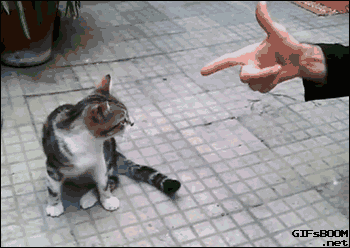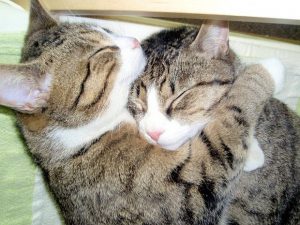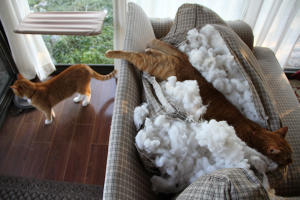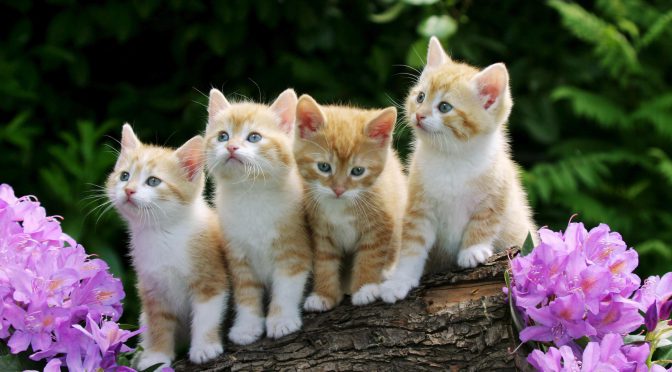You’ve completed your work. It’s not perfect and you can recall many nights where it seemed to be more of a hassle than you expected, but you’re certain it really was worth it in the end. The little bumps and rough spots throughout can be patched over in no time and you’re already thinking about how much people will love it. But one thing is truly standing in your way before you can get it to those people: you still have to edit the damn thing.
Those rough patches, a mark of late nights and caffeine fueled fever dreams, are more than just a little inconvenient. To you they’re excusable because you know the story behind each and every one. But to the audience, those are strange artifacts with no real reason to be there and only make you look like an unprofessional hack. Typos alone probably account for half of your work past sunset (or, if you’re really out there, past sunrise). And there are just some scenes that are needing some trimming or outright removal. The famous old adage rings through your head, “kill your darlings first”. You take a swig from your poison of choice – whether it be from Juan Valdez or Jack Daniels – and get ready to set about your grim work.
Just one question: how the hell do you know which darlings to kill?
Identifying The Victims

Despite it’s popularity, it takes a while to understand what exactly that famous piece of advice really means. The fact is that the advice is somewhat vague, almost painfully so. All it really defines for you is that you need to kill your “darlings” and someone can easily mistake that for meaning you need to kill any scene you actually like. Of course, that can’t possibly be what it means, Instead, as I mentioned a few months ago, the advice means to learn to let go of things that you’re personally attached to but are preventing your work from reaching the next level. Essentially, it’s telling you to get out of your own way.
But even there you still have some problems in identifying what exactly you need to get rid of. From where you sit, it can be difficult to tell the difference between the scenes and chapters that work and those that don’t. After all, how can you really know what doesn’t truly serve the story if you put it there in the first place? If you really saw a problem with it, it likely wouldn’t be there.
Now, of course, you have some instinct as to what works and what doesn’t already, but that instinct may not always be enough. So, like with many parts of writing, when running into a potential problem scene it’s always good to start asking questions. For instance…
Who Is It Important To?

The first thing to consider about any scene you may think is a problem is who exactly it’s important to – real or fictional. Is the scene giving your audience important information? Is it giving your character something they needed? Is it potentially setting up something for a character that hasn’t been seen yet? There are any number of people who a scene could be important to.
But the most dangerous of those is “you”. If you can ask this question and can’t think of someone other than yourself who would see a point in the scene, that’s a problem. If no one else comes to your work and takes something away from that scene, then that means it really didn’t have a point to the vast majority of people exposed to it. Filling space and not serving a purpose is one of those cardinal sins of storytelling that we’re all painfully aware of. We’ve all experienced it and wished something wasn’t there. And as a result, if you know you have something there that won’t matter to anyone else, that may be a “darling” to kill.
But what if you think there may still be others out there who see a purpose to it? Then the next question you’d have to ask is…
What’s Important About It?

This is fairly self explanatory but often one of the hardest to pin down. There are a lot of things a scene can hold purpose for that aren’t black and white. Some writers would argue that nothing should be left in a story that doesn’t somehow serve the plot. But ensuring that everything serves the plot arc alone ignores the possibility that some things may serve the development of characters and worlds. But that’s exactly where you can see if something’s a darling or not – whether you can define that purpose.
It’s okay if it serves the character development or the world development, even encouraged at points. But if you can’t precisely identify what that purpose of your scene actually is in a way that could be communicated to others, we fall back to the previous question in the list. If you couldn’t possibly explain why it’s important to other people then you can’t really expect those other people to find value in it.
Now this doesn’t mean every single person has to see that value, it may be something left up for debate, but it just has to be something that’s there. If you intend to hide behind the idea that there’s no purpose but “I leave it up to the audience” then there’s a good chance it has some problems. Sometimes the purpose of the scene is to start discussions like that, but even then it would be something you could explain. After all, how hard is it to say “I wanted to start a discussion” and actually mean it?
When Did You Include It?

Now, this seems like a really arbitrary question, but it’s one that is totally worth considering because of the many variations of how this can become a problem. Most good scenes, most perfect ones, happen organically. They flow off of each other as you work through the story and they become moments as the different moving parts come together. There will always be an outline of some sort in your head but those are generally just working off of beats that you have to hit to get through the plot arc you’ve mapped out. You won’t get stuck on a specific beat if it’s possible to write that beat two different ways.
But what happens when you’ve written a scene in your head before you’ve actually gotten to that point in the story?
This is when you start to have some problems with letting go. For some people this will appear in the middle of actually writing the story, struggling to get beyond something that should have fit but just doesn’t anymore. When you plan out a scene almost exactly before you get there naturally you’ll run the risk of making artificial choices to get there. Does it make sense for these people to be behaving this way in this setting as the story has unfolded so far, or is it just that’s how you pictured it and it absolutely has to go that way?
If you did write the scene before you even got to that point naturally, it’s probably a darling, and you probably already know that. Which leads to the question…
Why Is It Still There?

If you noticed something that was giving you problems because it wasn’t something that flowed naturally, why did you leave it there? You had to have made that decision already, and it was important enough for you to ignore your gut instincts. You knew something was off but chose to ignore that because, for some reason, this scene happened to be more important to you than that feeling. So what was that reason?
If you don’t know what it was, likely it wasn’t something you should be trying to maintain. Sometimes we just get stuck on an idea, unable to move forward if it isn’t exactly how we pictured it. But as said many times before, that’s when we have to get out of our own way. It almost always hurts to do, and not all of us can bring ourselves to do it. But if you can then you’ll come away with a stronger work as a result in most cases.
On the other hand, If it was a good reason, or even one you can justify to yourself, there may be some room to argue for keeping it. But if you’re looking to keep that, there are some considerations.
How Big Is The Impact?

If you’ve identified the darling by this point, the question becomes whether or not you should kill it. That can be hard, I’ve known more than a few who haven’t been able to let go. So it’s also important to recognize what exactly it’s doing to your story. In a worst case scenario, an untreated “darling” can easily consume other aspects of the story around it. But there are times when these little lumps of useless material are benign and not causing any real harm to the story. The hard part is determining which version of the “darling” you happen to have on your hands.
The first thing to consider when determining this is whether or not it changes other parts of the story. If the thing you’ve realized is a darling manages to influence the scenes around it or even other aspects of the story you’re telling, it probably needs to go. As said before, this can lead to some artificial decisions where you force other scenes to serve this one moment. Generally it’s a bad idea to have the story service a scene rather than the other way around, but it gets even worse if that scene has no real purpose to begin with. So if you do happen to see how it is causing other things to orbit around it, that’s one you have to kill.
Another consideration is how it may impact the pacing of your story. If it serves no purpose, it better not take up a lot of time or space. You can’t dedicate an entire chapter or several minutes of the audience’s time to something that has no real benefit to them. This is generally how you derail the flow of an otherwise decent story – forcing people to slog through material they don’t care about to get to something they do enjoy. A good rule of thumb is that anything that requires you to turn a page best have a reason to be there. Because humans are lazy animals, and physical motion is generally avoided unless we’re in a good mood.

And, finally, if something does take up too much space or influences other aspects – can it be minimized? If something is potentially dragging your story down or influences other aspects, if you can find a way to make that impact as minor as possible there may be argument for keeping it. Can you stick it into another place where it wouldn’t slow your pace? Can you make it so that the parts influenced aren’t, in turn, influencing other aspects of the story? The truth is, it’s harder than it sounds, and it shouldn’t really be tried all that often, but we all know too well how hard it can be to let something go.
By this point, you’re probably frustrated, even discouraged. Something you felt so much attachment to may be the very thing holding you back. So I can understand why you would want to try to save it. The question is whether or not saving it will be something that you can feel okay about later. Some people can and some of them even get away with it. But the important part is to always be honest with yourself as much as you possibly can.
There are people who have totally retained their “darlings” and later came to regret it. There are even people who didn’t realize they had until some time later. And, there have been people who kept them but managed to avoid letting it derail the rest of the story in the process. No two creators are exactly alike in this regard. But, the one thing to keep in mind if you do get discouraged is that we all have darlings we need to kill. And, if you don’t believe me, keep in mind…
JK Rowling wrote the ending very early in her writing process, and later admitted some of it wasn’t natural.
(I write novels. I’m sure I missed a darling or two myself, but I’m fairly confident none of them dragged anything down. On the other hand, my twitter account is full of darling things – I make no apologies)







